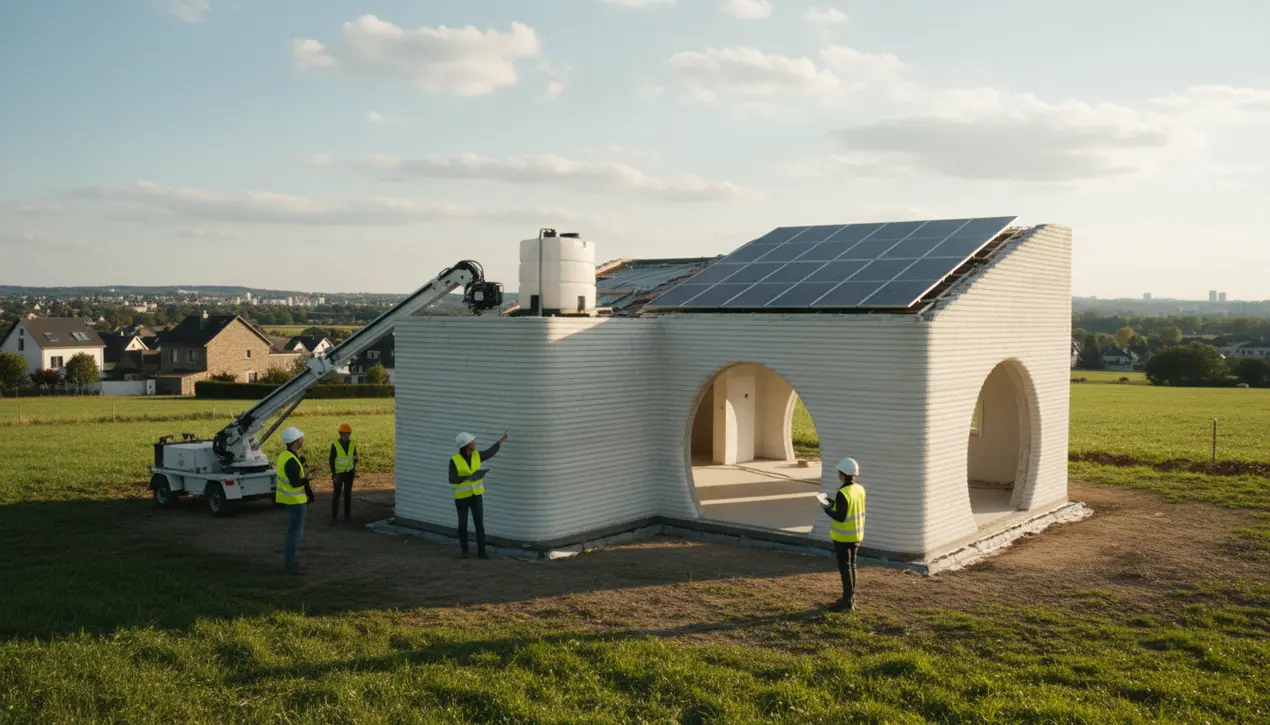
AIresearch & breakthroughsScientific Discovery via AI
Luxembourg's First 3D-Printed Home Builds Big Ideas.
RA
Rachel Adams
1 day ago7 min read2 comments
In a quiet corner of Luxembourg, a nation more often associated with grand finance than grassroots innovation, a quiet revolution is taking root with the completion of Tiny House LUX, the country's first 3D-printed home. This isn't merely a technological curiosity; it is a profound and timely response to the intertwined crises of housing affordability and environmental degradation that are gripping communities across Europe.The project, conceived by a coalition of local engineers and sustainability advocates, utilizes a method known as contour crafting, where a large-scale printer deposits layers of a specially formulated, low-carbon concrete to erect the walls of the dwelling in a matter of days, a fraction of the time required for traditional construction. This dramatic reduction in build time is coupled with a significant decrease in material waste, a chronic and often overlooked pollutant from conventional building sites that contributes significantly to landfill mass and resource depletion.The design philosophy of Tiny House LUX goes beyond its method of assembly, embracing a holistic model of eco-living that integrates rainwater harvesting systems, high-efficiency solar panels, and passive heating and cooling principles, creating a self-sustaining micro-habitat. For a small, densely populated country like Luxembourg, which faces intense pressure on its land and resources, this compact, efficient model presents a viable pathway toward sustainable urban densification without sacrificing quality of life.The implications ripple outward, offering a blueprint for post-industrial nations struggling with homeless encampments and skyrocketing urban rents; it’s a tangible alternative to the sprawling, resource-intensive suburban developments that have characterized the last century. However, the path forward is not without its obstacles.Regulatory frameworks, from building codes to zoning laws, are notoriously slow to adapt to disruptive technologies, and the initial capital investment for 3D printing equipment remains a barrier to widespread adoption. Furthermore, a crucial question lingers: can this technology be scaled to create not just individual eco-havens for the few, but entire communities of affordable, dignified housing for the many? The true success of Tiny House LUX will not be measured by its architectural awards or media coverage, but by its ability to catalyze a systemic shift in how we conceive of shelter, pushing us toward a future where a home is not a luxury commodity, but a fundamental, sustainably provided right for all, in harmony with the fragile ecology we all share.
#3D printing
#sustainable architecture
#housing crisis
#Tiny House LUX
#construction innovation
#featured
Stay Informed. Act Smarter.
Get weekly highlights, major headlines, and expert insights — then put your knowledge to work in our live prediction markets.
Comments
Loading comments...
© 2025 Outpoll Service LTD. All rights reserved.